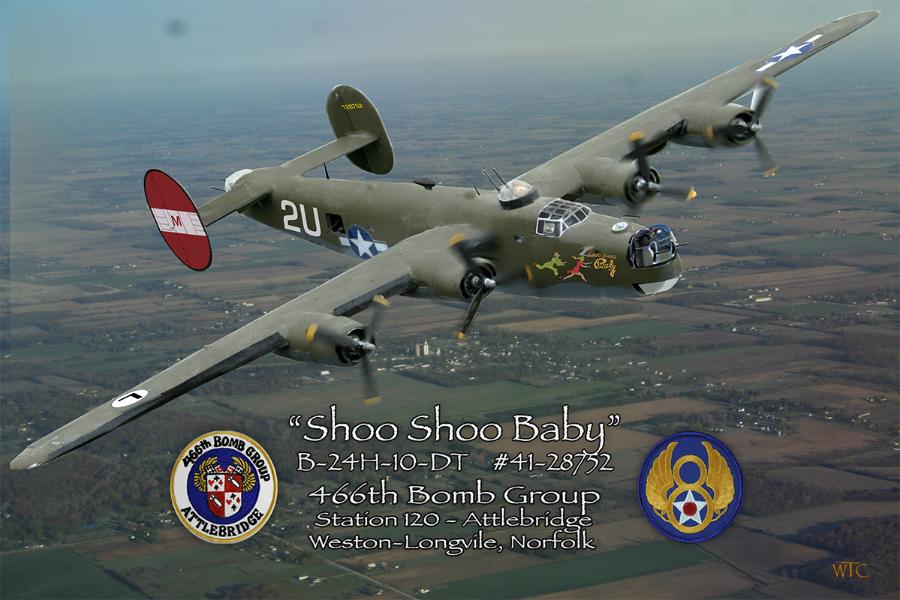
Day is Done
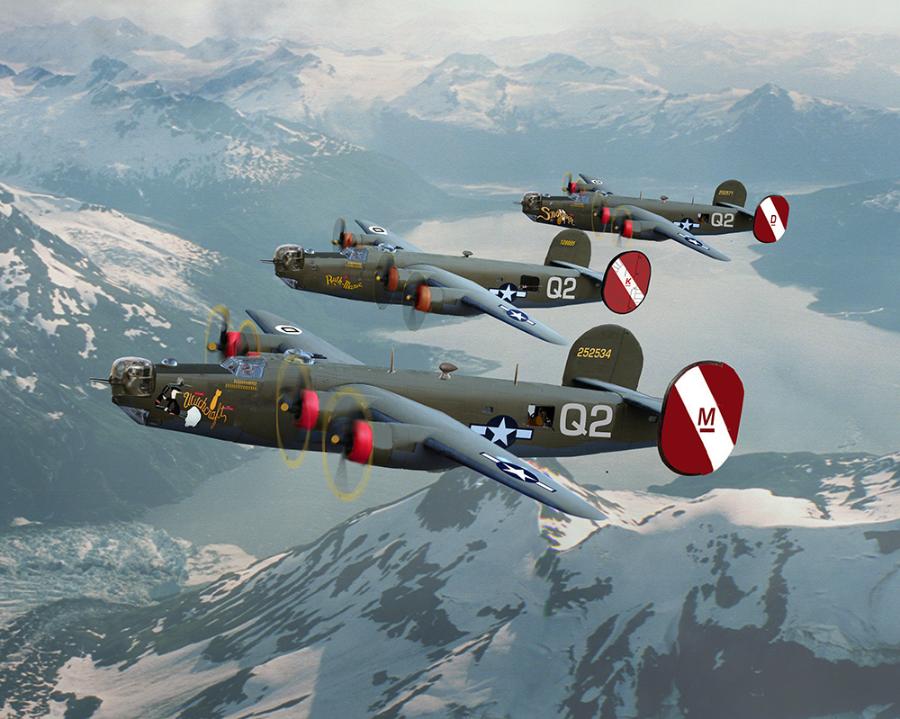
467th Bomb Group "Witchcraft" "Ruth Ann" "Snooper"
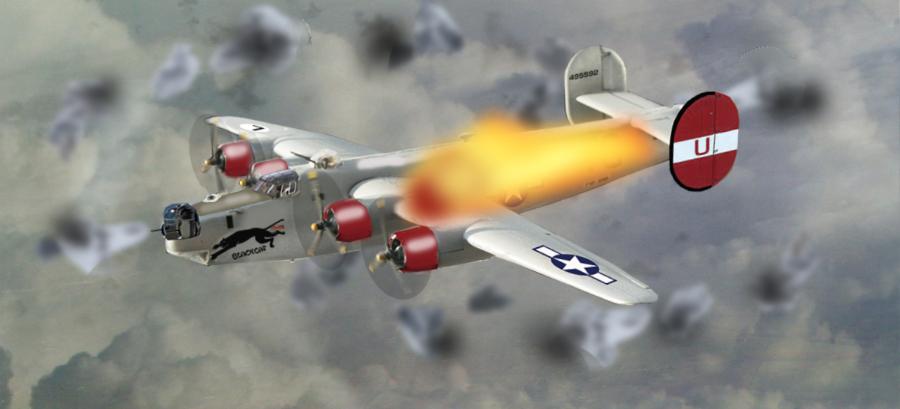
B-24-J #42-95592 "Black Cat" Farrington Crew
The last airplane shot down over Europe
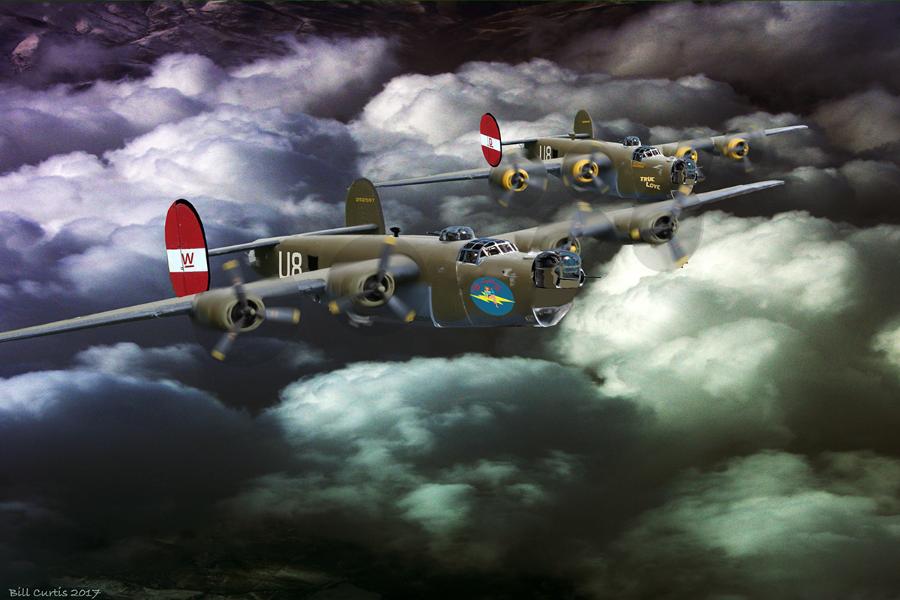
"Lady Lightning" and "True Love" 786th Squadron
Two of four aircraft Aircraft that were shot down while returning from mission
on August 15, 1944
8th Air Force B-24 Bases
Bomb Group Tail Colors
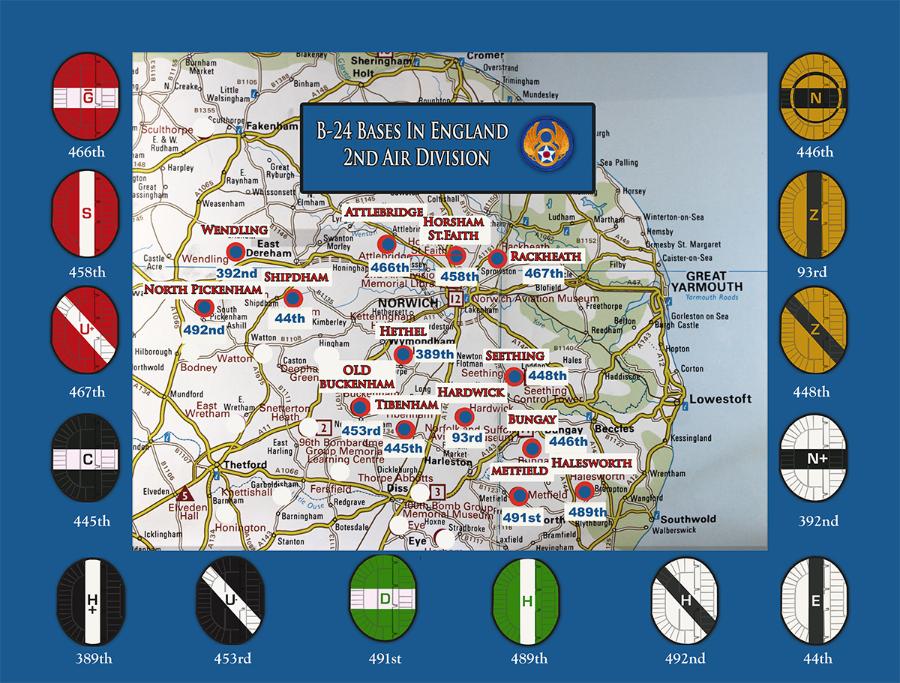
466th Bomb Group Formation Ship
“Ready & Willing”, The Formation Ship for the 466th Bomb Group came to us as a war-weary B-24D from the 93rd Bomb Group. It had seen many tough missions but none were probably as bad as August 1, 1943 when the mission started in the desert in Tunisia. It was a low-level bombing mission of the oil fields at Ploesti in Rumania. They were flying low to evade German radar but still they were detected well before they arrived. German Flack batteries were waiting. “Ready and Willing” took a number of flack hits and one engine caught on fire. The pilot John “Packy” Roche said that he was so low he flew under high tension power lines and then had to climb to miss smokestacks. They were one of the lucky crews that made it home that day. We're glad they did!
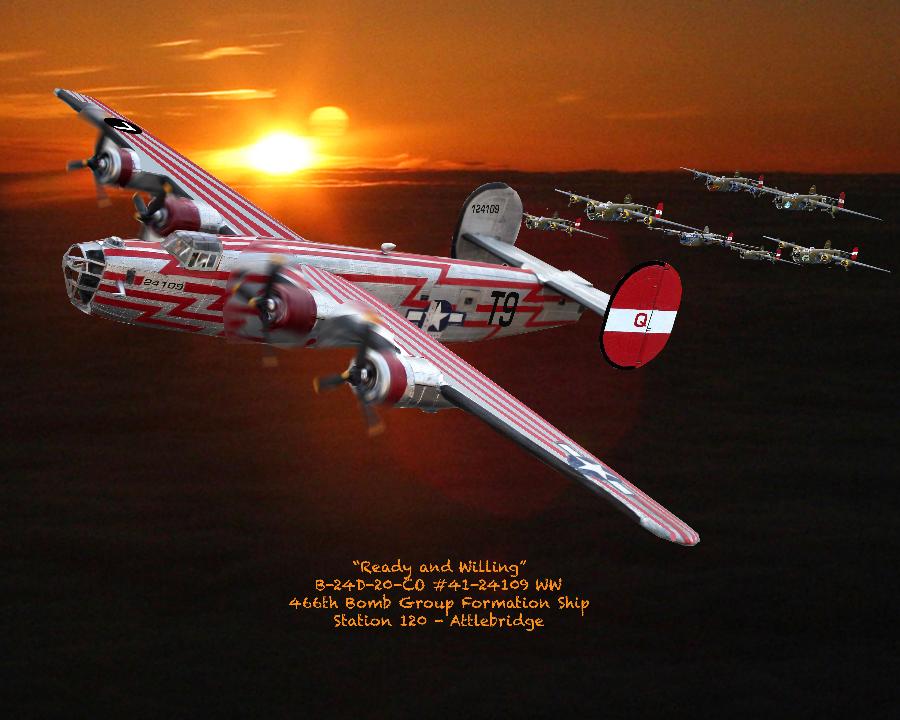
In the early morning hours B-24's and B-17's would take off with a full load of fuel and bombs.They flew up through heavy clouds trying to avoid other aircraft. The 466th Bomb Group would fly north to the an area off the coast near Cromer where they would assemble their formation. They would line up on a brightly painted Assembly Ship called "Ready & Willing". She may have been ready and willing but she was a war weary bird who had flown too many combat missions already, and was now stripped of all armor and weapons and painted brightly, to be recognized easily . She was the first B-24 to arrive at the "Splasher" every morning and would start to fly in an oblong pattern. One by one the 466th B-24's would line up in formation behind her on the way to their combat missions. The crews affectionately called her the "Striped Ass Ape". She would lead the bombers counterclockwise in a large circle over the North Sea. The assembly process would often take an hour and a half. When they were all in formation, with all the formations of other bomb groups, the assembly ship would peel off and return to base while the bombers would head west to Germany and other targets.
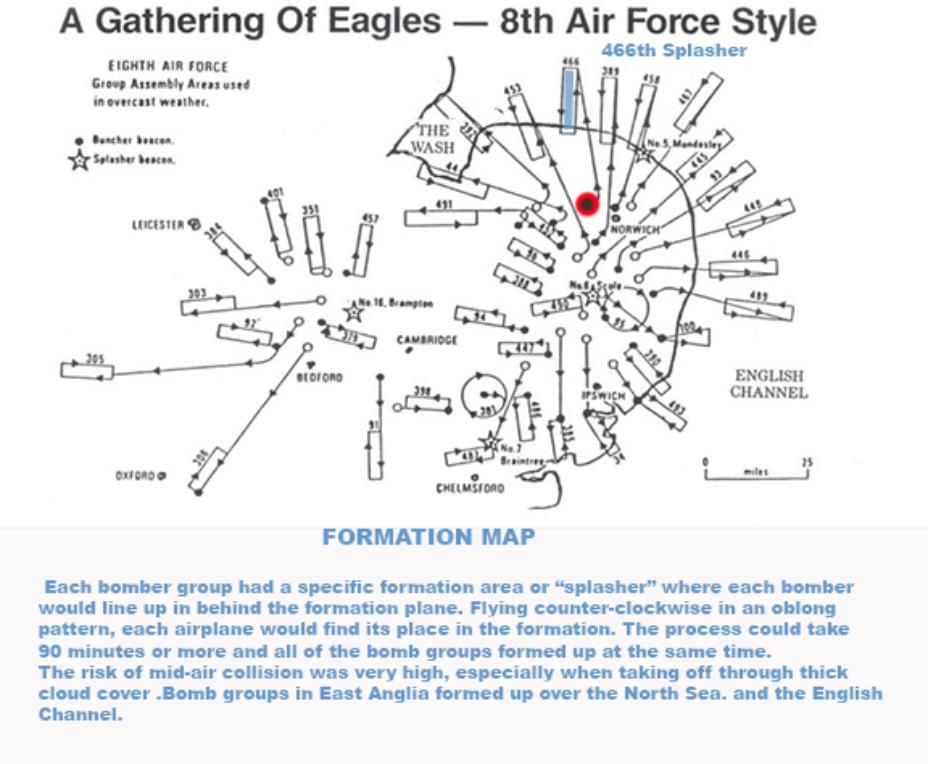
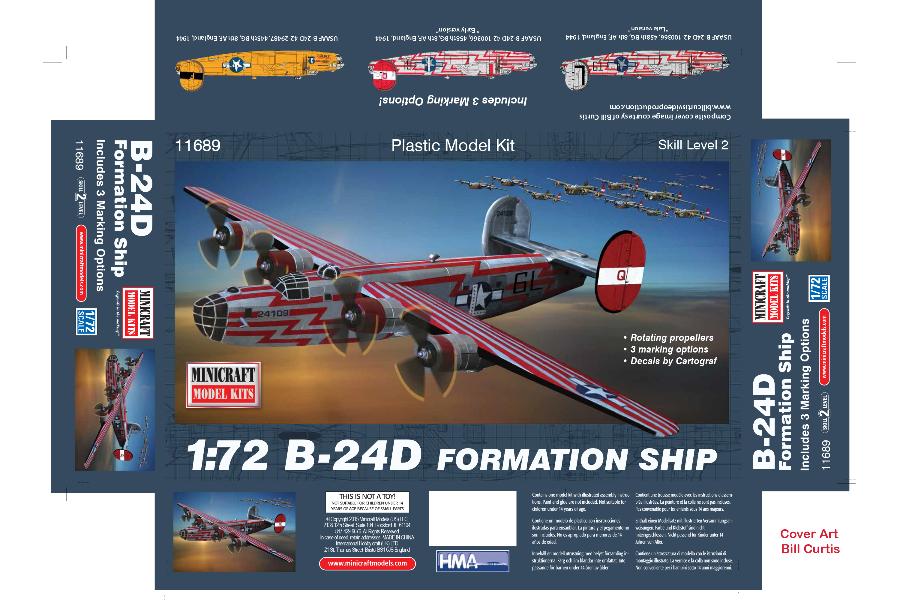
Minicraft Models INC used one of my prints for the box cover design of a 1:72 B-24-D Model Kit that was released in 2016. The kit includes a detailed set of decals for the striping on "Ready and Willing," the 466th Formation Ship.
These Model Kits available on EBAY

466th Bomb Group "Ole Tom Cat" B-24 # 42-52555 Caverne Crew # 517 was shot down on their very first mission April 9, 1944. All 10 crewmen were KIA. This print was created for a brother of one the lost crewmen.
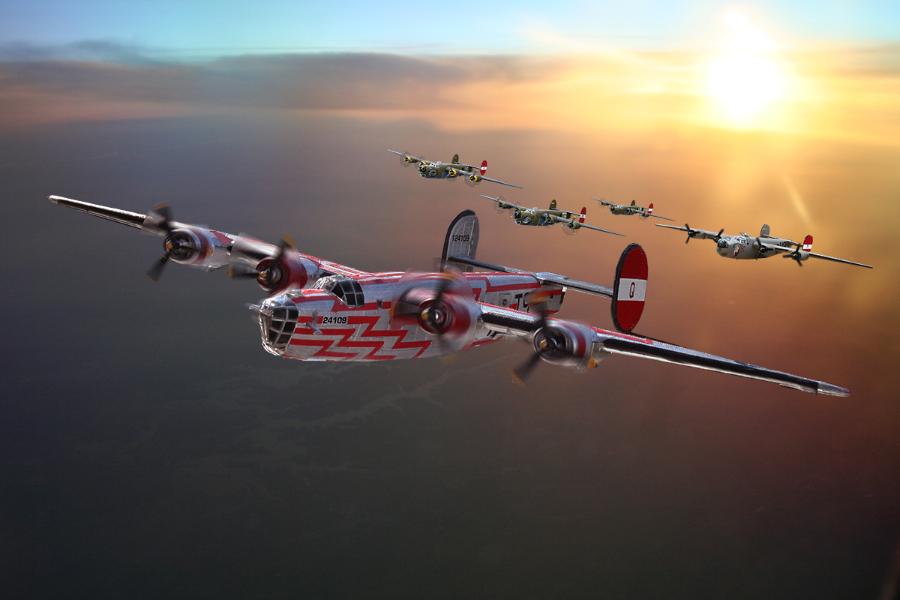

Dark Rhapsody B-24-H #41-29466
Griffen Crew #506- Lost on Bomb Group's first mission in mid-air collision over Holland 23-March 1944 - 9 KIA
B-24 Liberator Prints
So is this really art? As close as I can get, but probably not.
So what are these concoctions of fake and real and how and why do I take the time to do them?
All of the B-24 and B-17 prints here are made up of layers of photographs. The bottom layer of each print is a photo I take with a 9 mega pixel digital camera usually from an airliner using a polarizing filter to cut the glare. I also use aerial photos I have taken in the past from helicopters while working on video projects. The B-24's in my prints are with a few exceptions, four model B-24 airplanes I assembled and painted in either the drab green camo color or gray for the unpainted airplanes. The first B-24's that went to England in the war were painted in the drab green, but later editions of these airplanes were left unpainted. They found that paint added over 600 pounds of unnecessary weight. It was not as if the camouflage really prevented them from being seen. For the most part all graphic markings on the prints are added in layers in photoshop as well as layers of side and wing decals. The models are photographed in natural soft outdoor light from as many different angles that I can think of. I try to blend the real with the fake to make it look as real as possible. The P-51 fighter in a lot of my pictures is a real airplane that I photographed of at an air show. All of my B-17 photos were from the same air show. The German jet fighters were from photos I took of an airplane at the Naval Air Museum in Pensacola. I shot it from as many different angles as I possibly could. I some times to use old images and WWII photos of B-24's on a mission when I can and add color to them.
Often I am asked to make prints of a specific airplane. If I can find an old Black & white photo of the airplane, I make a copy of the nose art and blow it up and then put a clear layer on top of it in photoshop and trace the image and color it the way it might have looked- nobody remembers the exact colors any more.... I then can paste the nose art and size it on the B-24.
Some print requests have been from adult children of veteran fathers who did not survive the war.
The Wichcraft
The Colling's Foundation owns and tours with what is probably the last flying B-24 Liberator "Witchcraft". I had the opportunity to walk through the airplane several times and take a photos from the waist gunner window while it was still on the ground. I used that photo as a foreground. I pirated a flying photo of Witchcraft from the internet and then added 466th Bomb Group Airplanes. The background is a photo I took from a helicopter in Alaska, and I figured it was a pretty good substitute for the Austrian Alps. I then layered it all together in photo-shop.
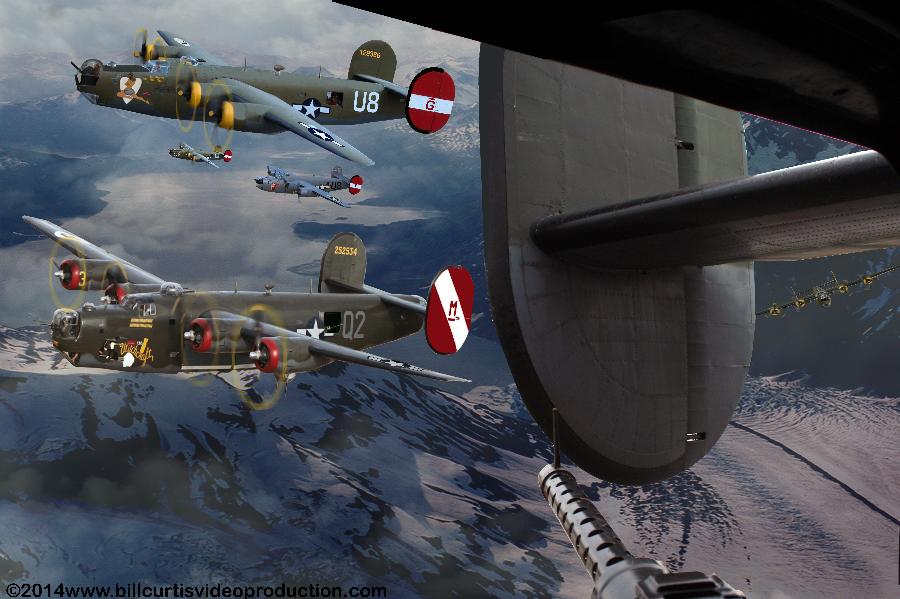

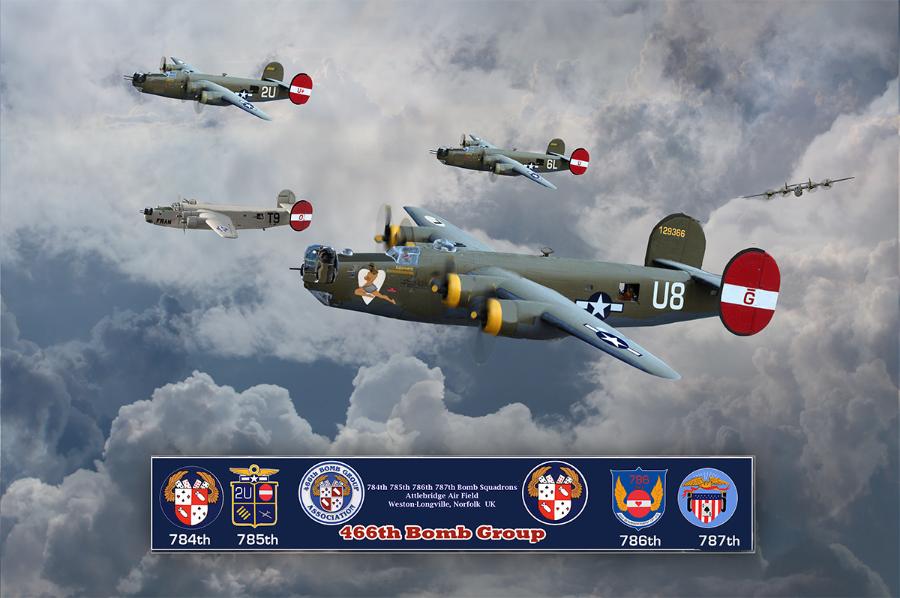
These Aircraft represent the 4 Bomber Squadrons with the 466th Bomb Group
The squadron letter markings are behind the waist gun. U8 786th, T9 784th, 2U 785th, 6L 787th